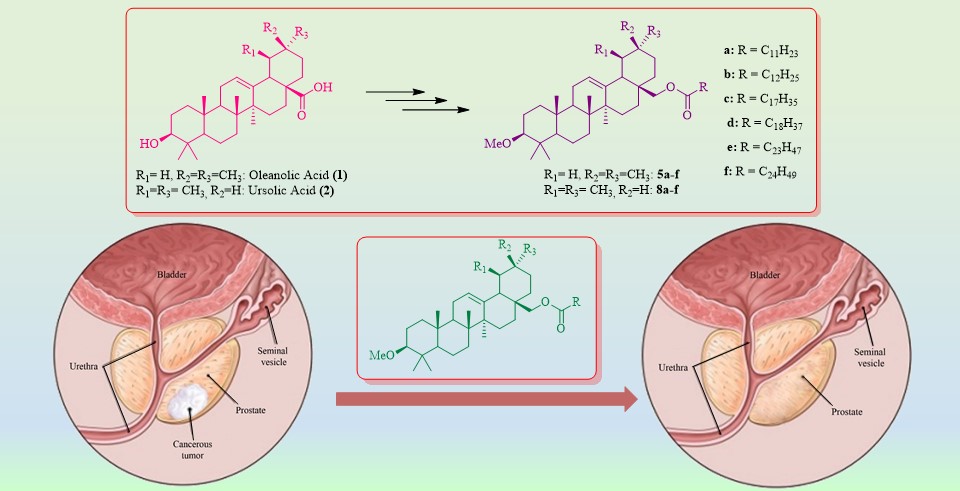JOURNAL 1792
Organic Communications
Year: 2020 Issue: 3 July-September
p.114 - 126
Viewed 3070 times.
GRAPHICAL ABSTRACT

ABSTRACT
In this study, 12 new oleanane and ursane derivative triterpene compounds, having fatty acids in the form of esters with carbon numbers of 12, 13, 18, 19, 24 and 25, were synthesized starting from natural products oleanolic and ursolic acids. Initially, 3-methylerythrodiol (3β-methoxyolean-12-en-28-ol) and 3-methyluvaol (3β-methoxyurs-12-en-28-ol) were synthesized from oleanolic acid and ursolic acid, respectively. For this purpose, secondary OH group at C-3 of oleanolic and ursolic acids were protected as methyl ether and, then, their carboxylic acid moieties were reduced by aluminum hydride. New fatty acid derivatives 5a-f and 8a-f were synthesized through the reaction of 3-methylerythrodiol/3-methyluvaol and corresponding fatty acid halides. In vitro cytotoxic activities of the all synthesized compounds were investigated on 3T3 fibroblast cells and PC3 prostate cancer cell lines. While all the compounds showed at least 70% inhibition on PC3 prostate cancer cells at a concentration of 25 µM, they had average of 50% inhibition on 3T3 fibroblast human healthy cells at the same concentration. Compounds 5c and 8c demonstrated the least toxic effect on 3T3 fibroblast human healthy cells and the highest toxic effect on PC3 prostate cancer cells at a concentration of 12.5 µM. Moreover, compounds 8c and 8e had the least toxic effect on 3T3 fibroblast human healthy cells and the highest toxic effect on PC3 prostate cancer cells at the same concentration.
KEYWORDS- Oleanolic acid
- ursolic acid
- prostate cancer
- 3T3 cells
- cytotoxicity
- fatty acid